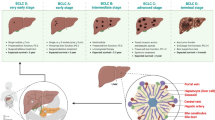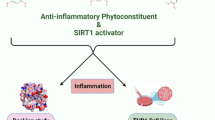Summary
Digalloylresveratrol (DIG) is a recently synthesized substance aimed to combine the effects of the natural polyphenolic compounds gallic acid and resveratrol, which both are excellent free radical scavengers with anticancer activity. In this study, we investigated the effects of DIG in the human AsPC-1 and BxPC-3 pancreatic adenocarcinoma cell lines. Treatment with DIG dose-dependently attenuated cells in the S phase of the cell cycle and led to a significant depletion of the dATP pool in AsPC-1 cells. The incorporation of 14C-cytidine into nascent DNA of tumor cells was significantly inhibited at all DIG concentrations due to inhibition of ribonucleotide reductase, a key enzyme of DNA synthesis in tumor cells. Furthermore, Erk1/2 became inactivated and moderated p38 phosphorylation reflecting increased replication stress. DIG also activated ATM and Chk2, and induced the phosphorylation and proteasomal degradation of the proto-oncogene Cdc25A, which contributed to cell cycle attenuation. Taken together, DIG is an excellent free radical scavenger, strongly inhibits RR in situ activity, cell cycle progression, and colony formation in AsPC-1 and BxPC-3 cells thus warranting further investigations.







Similar content being viewed by others
References
Almhanna K, Philip PA (2011) Defining new paradigms for the treatment of pancreatic cancer. Curr Treat Options Oncol 12:111–125
Jemal A, Siegel R, Ward E, Hao Y, Xu J, Thun MJ (2009) Cancer statistics, 2009. CA Cancer J Clin 59:225–249
Renaud S, de Lorgeril M (1992) Wine, alcohol, platelets, and the French paradox for coronary heart disease. Lancet 339:1523–1526
Richard JL (1987) [Coronary risk factors. The French paradox]. Arch Mal Coeur Vaiss 80 Spec No:17-21
Appeldoorn CC, Bonnefoy A, Lutters BC, Daenens K, van Berkel TJ, Hoylaerts MF, Biessen EA (2005) Gallic acid antagonizes P-selectin-mediated platelet-leukocyte interactions: implications for the French paradox. Circulation 111:106–112
Salucci M, Stivala LA, Maiani G, Bugianesi R, Vannini V (2002) Flavonoids uptake and their effect on cell cycle of human colon adenocarcinoma cells (Caco2). Br J Cancer 86:1645–1651
Horvath Z, Saiko P, Illmer C, Madlener S, Hoechtl T, Bauer W, Erker T, Jaeger W, Fritzer-Szekeres M, Szekeres T (2005) Synergistic action of resveratrol, an ingredient of wine, with Ara-C and tiazofurin in HL-60 human promyelocytic leukemia cells. Exp Hematol 33:329–335
Saiko P, Szakmary A, Jaeger W, Szekeres T (2008) Resveratrol and its analogs: defense against cancer, coronary disease and neurodegenerative maladies or just a fad? Mutat Res 658:68–94
Kawada M, Ohno Y, Ri Y, Ikoma T, Yuugetu H, Asai T, Watanabe M, Yasuda N, Akao S, Takemura G, Minatoguchi S, Gotoh K, Fujiwara H, Fukuda K (2001) Anti-tumor effect of gallic acid on LL-2 lung cancer cells transplanted in mice. Anti Cancer Drugs 12:847–852
Madlener S, Illmer C, Horvath Z, Saiko P, Losert A, Herbacek I, Grusch M, Elford HL, Krupitza G, Bernhaus A, Fritzer-Szekeres M, Szekeres T (2007) Gallic acid inhibits ribonucleotide reductase and cyclooxygenases in human HL-60 promyelocytic leukemia cells. Cancer Lett 245:156–162
Shao J, Zhou B, Chu B, Yen Y (2006) Ribonucleotide reductase inhibitors and future drug design. Curr Cancer Drug Targets 6:409–431
Cerqueira NM, Pereira S, Fernandes PA, Ramos MJ (2005) Overview of ribonucleotide reductase inhibitors: an appealing target in anti-tumour therapy. Curr Med Chem 12:1283–1294
Takeda E, Weber G (1981) Role of ribonucleotide reductase in expression in the neoplastic program. Life Sci 28:1007–1014
Smith BD, Karp JE (2003) Ribonucleotide reductase: an old target with new potential. Leuk Res 27:1075–1076
Nocentini G (1996) Ribonucleotide reductase inhibitors: new strategies for cancer chemotherapy. Crit Rev Oncol Hematol 22:89–126
Holland KP, Elford HL, Bracchi V, Annis CG, Schuster SM, Chakrabarti D (1998) Antimalarial activities of polyhydroxyphenyl and hydroxamic acid derivatives. Antimicrob Agents Chemother 42:2456
Noble S, Goa KL (1997) Gemcitabine. A review of its pharmacology and clinical potential in non-small cell lung cancer and pancreatic cancer. Drugs 54:447–472
Toschi L, Finocchiaro G, Bartolini S, Gioia V, Cappuzzo F (2005) Role of gemcitabine in cancer therapy. Futur Oncol 1:7–17
Kolberg M, Strand KR, Graff P, Andersson KK (2004) Structure, function, and mechanism of ribonucleotide reductases. Biochim Biophys Acta 1699:1–34
Bernhaus A, Fritzer-Szekeres M, Grusch M, Saiko P, Krupitza G, Venkateswarlu S, Trimurtulu G, Jaeger W, Szekeres T (2009) Digalloylresveratrol, a new phenolic acid derivative induces apoptosis and cell cycle arrest in human HT-29 colon cancer cells. Cancer Lett 274:299–304
Madlener S, Saiko P, Vonach C, Viola K, Huttary N, Stark N, Popescu R, Gridling M, Vo NT, Herbacek I, Davidovits A, Giessrigl B, Venkateswarlu S, Geleff S, Jager W, Grusch M, Kerjaschki D, Mikulits W, Golakoti T, Fritzer-Szekeres M, Szekeres T, Krupitza G (2010) Multifactorial anticancer effects of digalloyl-resveratrol encompass apoptosis, cell-cycle arrest, and inhibition of lymphendothelial gap formation in vitro. Br J Cancer 102:1361–1370
Garrett C, Santi DV (1979) A rapid and sensitive high pressure liquid chromatography assay for deoxyribonucleoside triphosphates in cell extracts. Anal Biochem 99:268–273
Saiko P, Ozsvar-Kozma M, Bernhaus A, Jaschke M, Graser G, Lackner A, Grusch M, Horvath Z, Madlener S, Krupitza G, Handler N, Erker T, Jaeger W, Fritzer-Szekeres M, Szekeres T (2007) N-hydroxy-N′-(3,4,5-trimethoxyphenyl)-3,4,5-trimethoxy-benzamidine, a novel resveratrol analog, inhibits ribonucleotide reductase in HL-60 human promyelocytic leukemia cells: synergistic antitumor activity with arabinofuranosylcytosine. Int J Oncol 31:1261–1266
Szekeres T, Gharehbaghi K, Fritzer M, Woody M, Srivastava A, van’t Riet B, Jayaram HN, Elford HL (1994) Biochemical and antitumor activity of trimidox, a new inhibitor of ribonucleotide reductase. Cancer Chemother Pharmacol 34:63–66
Saiko P, Graser G, Giessrigl B, Lackner A, Grusch M, Krupitza G, Basu A, Sinha BN, Jayaprakash V, Jaeger W, Fritzer-Szekeres M, Szekeres T (2011) A novel N-hydroxy-N′-aminoguanidine derivative inhibits ribonucleotide reductase activity: Effects in human HL-60 promyelocytic leukemia cells and synergism with arabinofuranosylcytosine (Ara-C). Biochem Pharmacol 81:50–59
Grusch M, Polgar D, Gfatter S, Leuhuber K, Huettenbrenner S, Leisser C, Fuhrmann G, Kassie F, Steinkellner H, Smid K, Peters GJ, Jayaram HN, Klepal W, Szekeres T, Knasmuller S, Krupitza G (2002) Maintenance of ATP favours apoptosis over necrosis triggered by benzamide riboside. Cell Death Differ 9:169–178
Grasl-Kraupp B, Ruttkay-Nedecky B, Koudelka H, Bukowska K, Bursch W, Schulte-Hermann R (1995) In situ detection of fragmented DNA (TUNEL assay) fails to discriminate among apoptosis, necrosis, and autolytic cell death: a cautionary note. Hepatology 21:1465–1468
Grusch M, Fritzer-Szekeres M, Fuhrmann G, Rosenberger G, Luxbacher C, Elford HL, Smid K, Peters GJ, Szekeres T, Krupitza G (2001) Activation of caspases and induction of apoptosis by novel ribonucleotide reductase inhibitors amidox and didox. Exp Hematol 29:623–632
Hoshino J, Park EJ, Kondratyuk TP, Marler L, Pezzuto JM, van Breemen RB, Mo S, Li Y, Cushman M (2010) Selective synthesis and biological evaluation of sulfate-conjugated resveratrol metabolites. J Med Chem 53:5033–5043
Guo Y, Xu X, Qi W, Xie C, Wang G, Zhang A, Ge Y (2012) Synergistic antitumor interactions between gemcitabine and clofarabine in human pancreatic cancer cell lines. Mol Med Rep 5:734–738
Bernhaus A, Ozsvar-Kozma M, Saiko P, Jaschke M, Lackner A, Grusch M, Horvath Z, Madlener S, Krupitza G, Handler N, Erker T, Jaeger W, Fritzer-Szekeres M, Szekeres T (2009) Antitumor effects of KITC, a new resveratrol derivative, in AsPC-1 and BxPC-3 human pancreatic carcinoma cells. Investig New Drugs 27:393–401
Horvath Z, Murias M, Saiko P, Erker T, Handler N, Madlener S, Jaeger W, Grusch M, Fritzer-Szekeres M, Krupitza G, Szekeres T (2006) Cytotoxic and biochemical effects of 3,3′,4,4′,5,5′-hexahydroxystilbene, a novel resveratrol analog in HL-60 human promyelocytic leukemia cells. Exp Hematol 34:1377–1384
Gandhi V, Estey E, Plunkett W (1994) Modulation of arabinosylcytosine metabolism during leukemia therapy. Adv Exp Med Biol 370:119–124
Robinson BW, Im MM, Ljungman M, Praz F, Shewach DS (2003) Enhanced radiosensitization with gemcitabine in mismatch repair-deficient HCT116 cells. Cancer Res 63:6935–6941
Kastan MB, Bartek J (2004) Cell-cycle checkpoints and cancer. Nat Geosci 432:316–323
Chimploy K, Diaz GD, Li Q, Carter O, Dashwood WM, Mathews CK, Williams DE, Bailey GS, Dashwood RH (2009) E2F4 and ribonucleotide reductase mediate S-phase arrest in colon cancer cells treated with chlorophyllin. Int J Cancer 125:2086–2094
Bartek J, Lukas J (2003) Chk1 and Chk2 kinases in checkpoint control and cancer. Cancer Cell 3:421–429
Zhu KQ, Zhang SJ (2003) Involvement of ATM/ATR-p38 MAPK cascade in MNNG induced G1-S arrest. World J Gastroenterol 9:2073–2077
Ray D, Kiyokawa H (2008) CDC25A phosphatase: a rate-limiting oncogene that determines genomic stability. Cancer Res 68:1251–1253
Gao G, Peng M, Zhu L, Wei Y, Wu X (2009) Human papillomavirus 16 variant E7 gene induces transformation of NIH 3T3 cells via up-regulation of cdc25A and cyclin A. Int J Gynecol Cancer 19:494–499
Madlener S, Rosner M, Krieger S, Giessrigl B, Gridling M, Vo TP, Leisser C, Lackner A, Raab I, Grusch M, Hengstschlager M, Dolznig H, Krupitza G (2009) Short 42 degrees C heat shock induces phosphorylation and degradation of Cdc25A which depends on p38MAPK, Chk2 and 14.3.3. Hum Mol Genet 18:1990–2000
Iguchi T, Miyakawa Y, Yamamoto K, Kizaki M, Ikeda Y (2003) Nitrogen-containing bisphosphonates induce S-phase cell cycle arrest and apoptosis of myeloma cells by activating MAPK pathway and inhibiting mevalonate pathway. Cell Signal 15:719–727
Lin KL, Su JC, Chien CM, Tseng CH, Chen YL, Chang LS, Lin SR (2010) Naphtho[1,2-b]furan-4,5-dione induces apoptosis and S-phase arrest of MDA-MB-231 cells through JNK and ERK signaling activation. Toxicol In Vitro 24:61–70
Johnson GL, Lapadat R (2002) Mitogen-activated protein kinase pathways mediated by ERK, JNK, and p38 protein kinases. Science 298:1911–1912
Cui J, Sun R, Yu Y, Gou S, Zhao G, Wang C (2010) Antiproliferative effect of resveratrol in pancreatic cancer cells. Phytother Res 24:1637–1644
Franke TF, Kaplan DR, Cantley LC (1997) PI3K: downstream AKTion blocks apoptosis. Cell 88:435–437
Alessi DR, Andjelkovic M, Caudwell B, Cron P, Morrice N, Cohen P, Hemmings BA (1996) Mechanism of activation of protein kinase B by insulin and IGF-1. EMBO J 15:6541–6551
Jacinto E, Facchinetti V, Liu D, Soto N, Wei S, Jung SY, Huang Q, Qin J, Su B (2006) SIN1/MIP1 maintains rictor-mTOR complex integrity and regulates Akt phosphorylation and substrate specificity. Cell 127:125–137
Bozulic L, Hemmings BA (2009) PIKKing on PKB: regulation of PKB activity by phosphorylation. Curr Opin Cell Biol 21:256–261
Bozulic L, Surucu B, Hynx D, Hemmings BA (2008) PKBalpha/Akt1 acts downstream of DNA-PK in the DNA double-strand break response and promotes survival. Mol Cell 30:203–213
Schlieman MG, Fahy BN, Ramsamooj R, Beckett L, Bold RJ (2003) Incidence, mechanism and prognostic value of activated AKT in pancreas cancer. Br J Cancer 89:2110–2115
Yap TA, Yan L, Patnaik A, Fearen I, Olmos D, Papadopoulos K, Baird RD, Delgado L, Taylor A, Lupinacci L, Riisnaes R, Pope LL, Heaton SP, Thomas G, Garrett MD, Sullivan DM, de Bono JS, Tolcher AW (2011) First-in-man clinical trial of the oral pan-AKT inhibitor MK-2206 in patients with advanced solid tumors. J Clin Oncol 29:4688–4695
Hirai H, Sootome H, Nakatsuru Y, Miyama K, Taguchi S, Tsujioka K, Ueno Y, Hatch H, Majumder PK, Pan BS, Kotani H (2010) MK-2206, an allosteric Akt inhibitor, enhances antitumor efficacy by standard chemotherapeutic agents or molecular targeted drugs in vitro and in vivo. Mol Cancer Ther 9:1956–1967
Fontecave M, Lepoivre M, Elleingand E, Gerez C, Guittet O (1998) Resveratrol, a remarkable inhibitor of ribonucleotide reductase. FEBS Lett 421:277–279
Acknowledgments
This investigation was supported by the Medical-Scientific Fund of the Mayor of Vienna, grant #09059 to M.F.-S., the “Hochschuljubilaeumsstiftung der Stadt Wien”, grants #H-756/2005 and #H-2498/2011 to T.S. and P.S., respectively, by the Fellinger Cancer Research Association (Fellinger Krebsforschung Gemeinnuetziger Verein) to G.K. as a mission-oriented grant, and by the Herzfelder Family foundation with grants to T.S., P.S., and G.K. The authors also wish to thank Toni Jaeger for preparing the western blotting figures.
Conflict of interest
The authors declare that they have no conflict of interest.
Author information
Authors and Affiliations
Corresponding author
Rights and permissions
About this article
Cite this article
Saiko, P., Graser, G., Giessrigl, B. et al. Digalloylresveratrol, a novel resveratrol analog inhibits the growth of human pancreatic cancer cells. Invest New Drugs 31, 1115–1124 (2013). https://doi.org/10.1007/s10637-013-0009-x
Received:
Accepted:
Published:
Issue Date:
DOI: https://doi.org/10.1007/s10637-013-0009-x




